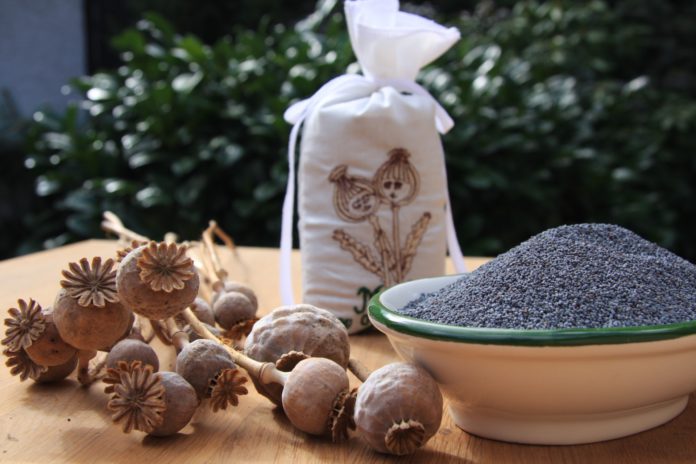Poppy seed, which was typical in our lands especially in the past, is basking in the glory again. It’s because of its taste characteristics, its variety of uses and in particular its multiple health benefits. What poppy dishes can you try?
Poppy is a traditional food with a long tradition, its demand has risen, and overall consumption is increasing. It becomes a delicious ingredient in both salty and sweet dishes. Besides the traditional poppy strudel, in cafes, we can find other treats such as poppy cakes, pies, tartlets, macaroons, and Bratislava rolls filled with poppy are sought after too. By the way, poppy cakes were already a popular treat in the time of the Austro-Hungarian Empire. Poppy products were even widely consumed in the Middle Ages. In many Slovak households, poppy dumplings, šúľance noodles, noodles or ball dumplings are still in a strong position, and they always attract foreign visitors.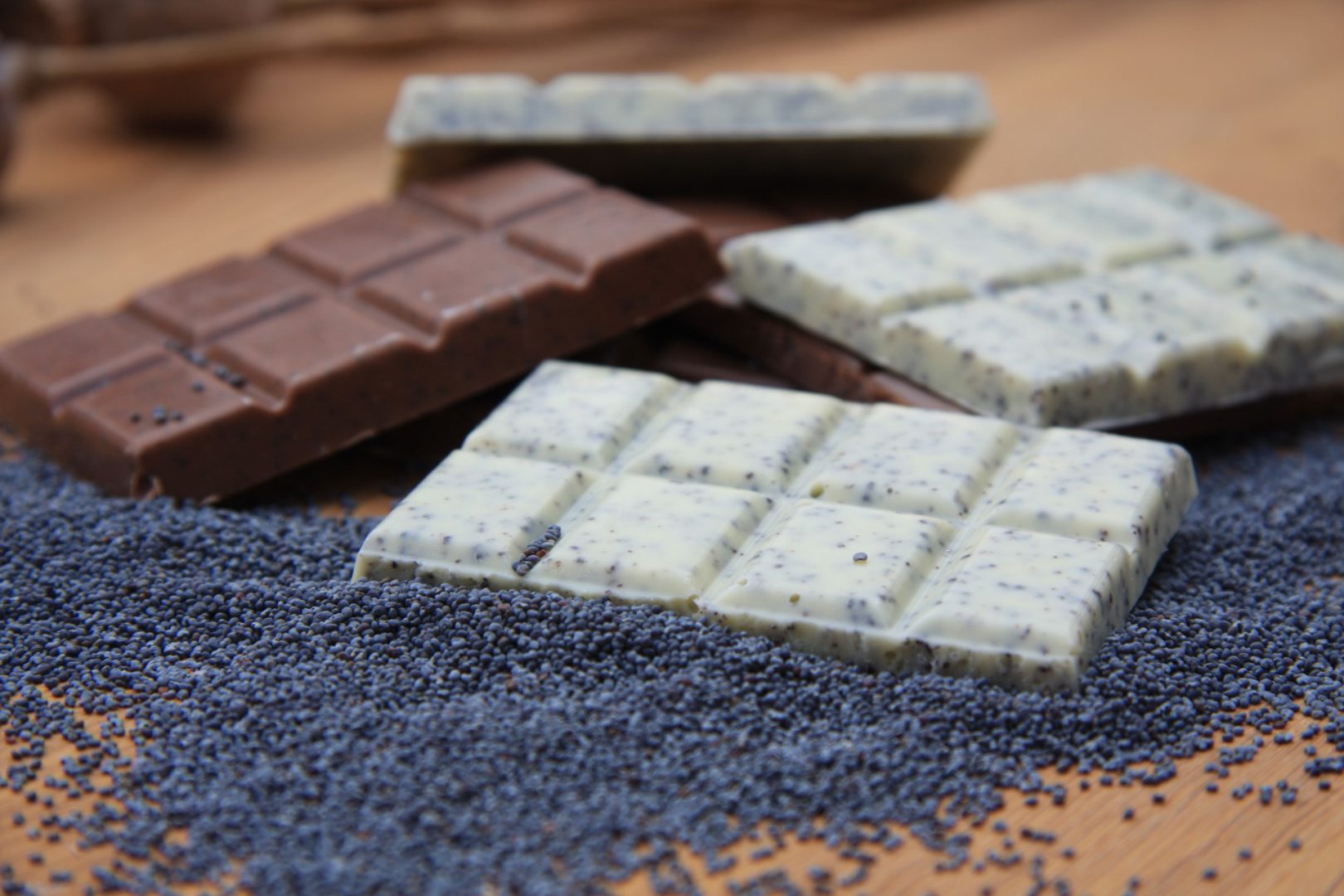
Poppy milk, which can be easily prepared at home, has become a trend recently. It’s delicious, and can be an alternative snack during the summer months. It tastes great chilled or optionally with some honey, cinnamon or cocoa. It’s rich in calcium, lactose-free and easily digestible. Poppy is also becoming a favorite part of the increasingly popular healthy smoothies. An unusual choice may be poppy pesto, which, like the traditional one, is suitable for pasta.
In particular, poppy is known to contain large amounts of calcium.
Oil, Flour and Unusual Combinations
The Poppy product high in nutritional value is cold pressed poppy oil. It’s rich in omega 6 – fatty acids, vitamins, and minerals. The oil from handpicked poppy has the highest quality. It serves for seasoning salads, sweet poppy dishes, i.e., in cold and hot cuisine. It’s not easy to obtain it. For 250 ml oil about 750 g of poppy is needed. You can buy it in many stores, a slightly higher price reflects the hard work of getting it but you definitely need to try it, it’s worth it! There is even poppy syrup that gourmands recommend to season pancakes.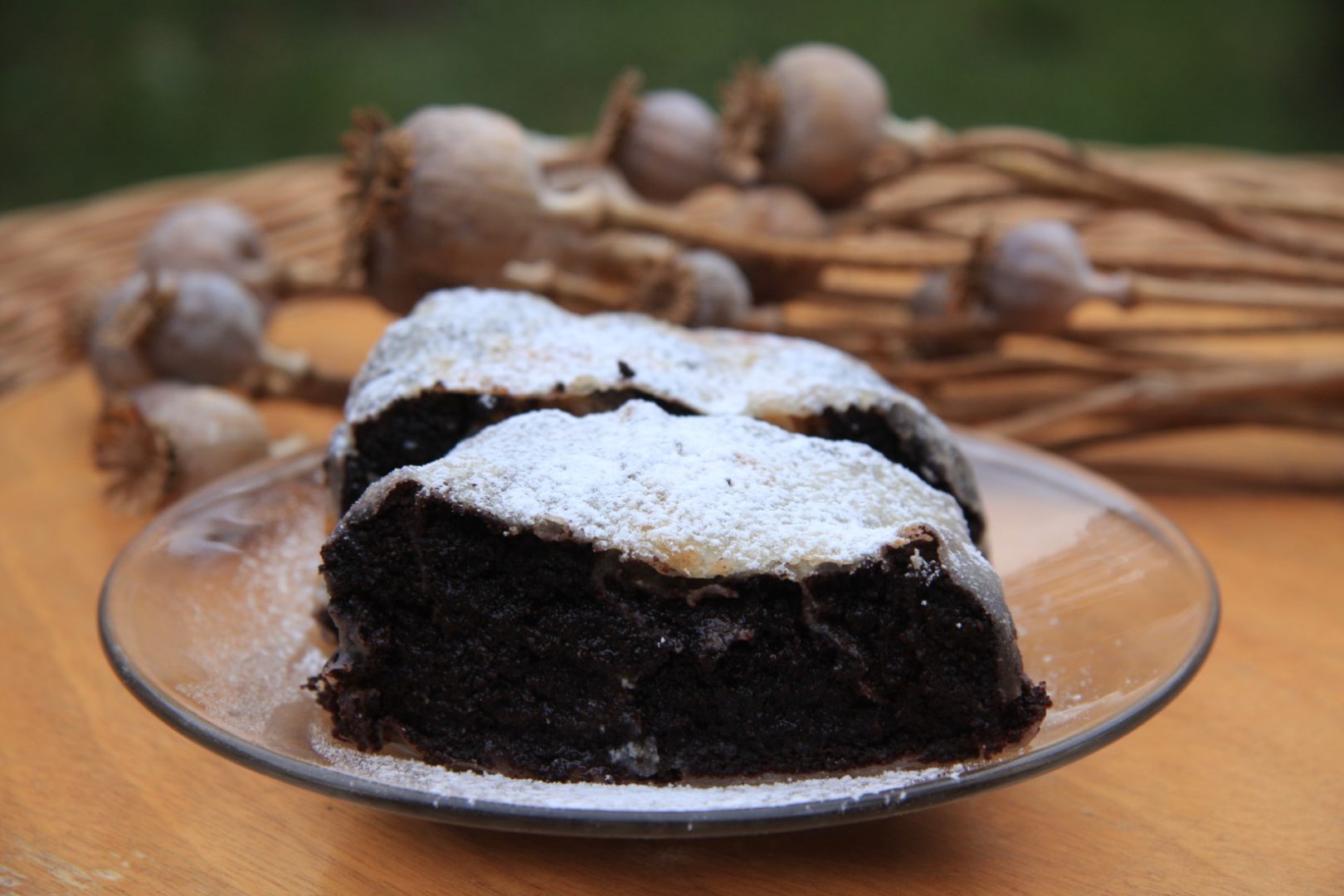
Poppy flour has also become a popular poppy product. Today it’s widely sought after mainly by celiacs and is also part of the popular paleo diet. This flour contains less fat, more vitamins, and minerals. By the way, poppy flour is a by-product of poppy seed oil production. Pressed poppy solids when obtaining oil are ground to blue or white flour.
The best way to keep the poppy seeds is out of light and wet in linen bags.
Poppy even became a grateful part of chocolate candies and classic chocolate. Today it’s possible to buy milk, white or dark chocolate, which includes blue poppy. Children aren’t the only ones who enjoy the candies or lollipops. By the way, poppy tastes excellent with cottage cheese, yogurt or pudding. Tiny poppy seeds are a symbol of abundance and happiness, that’s why they used to be part of Christmas Eve tables.
Generally, the poppy itself tastes the best, if combined with cinnamon, apples, plums and plum jam, cherry, vanilla or honey. The gourmands try to blend it even with coconut or salty caramel. The combination of sour cherry or plum juice with poppy is very interesting.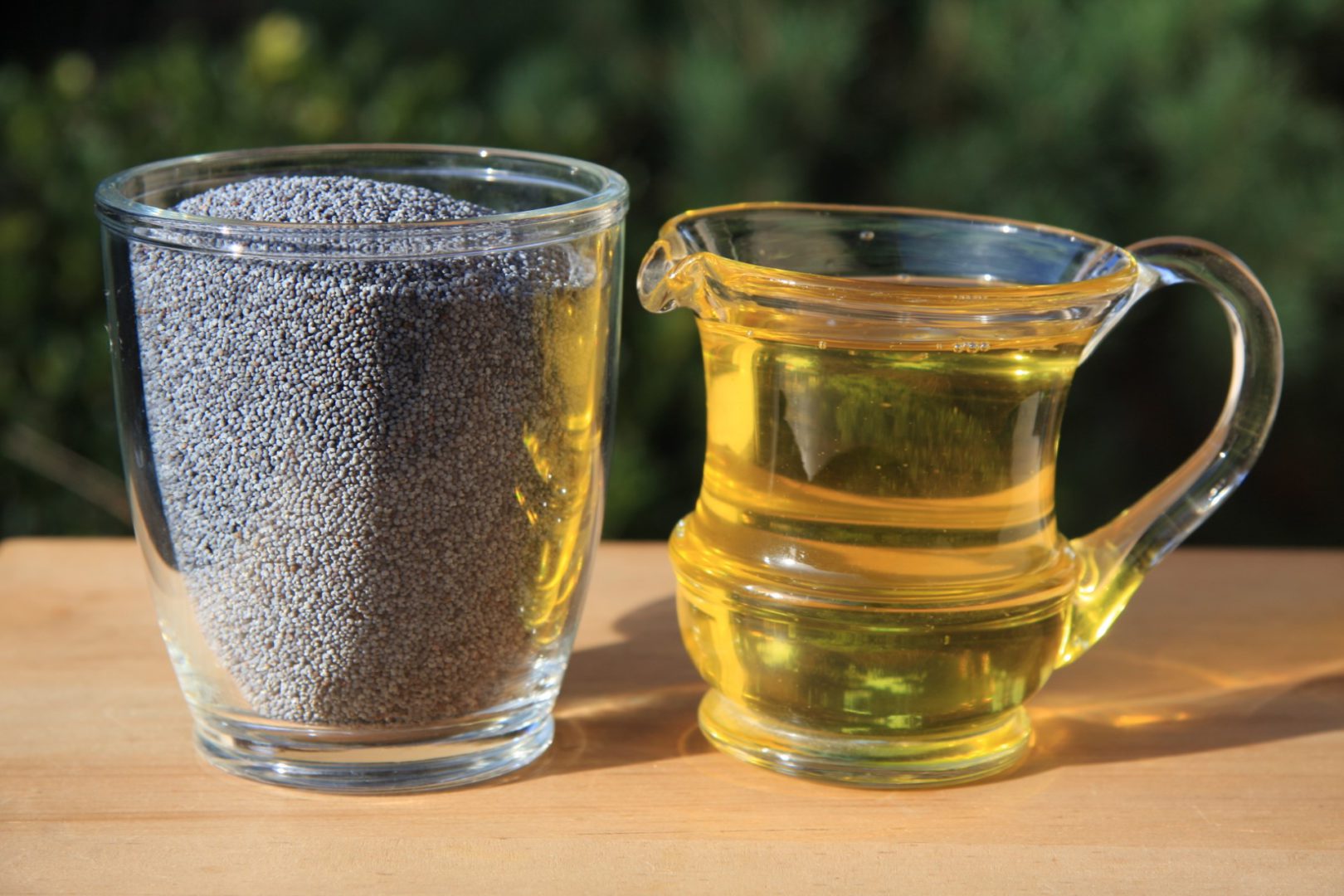
Worthy for Health
Poppy is nothing exotic; it’s a domestic, still little appreciated crop and food. It isn’t necessary to import it from foreign countries, which is a great motivation for many modern consumers to start consuming it more. Growing poppy can also be done in many locations in Slovakia, although it’s not as widespread as it was in the past.
Poppy is one of the healthiest foods available in our country. Poppy seeds are alkaline, rich in vitamins, minerals, proteins, carbohydrates, and fiber. A poppy seed contains about 42% fat, 20% protein, 6% mineral, up to 24% carbohydrate. In particular, poppy is known to contain large amounts of calcium, up to twelve times more than milk. In 100 g of poppy, there are up to 1400 milligrams of calcium, which even better absorbs than calcium from milk. As a result, the consumption of poppy products is especially recommended for people with osteoporosis and bone problems.
Not only poppy seeds but also the plant itself can be used.
Frequent poppy consumption is beneficial for people with frequent migraines, higher blood pressure, high cholesterol, and rheumatism. Many people associate poppy with better sleep and calm, and everything suggests that the poppy contributes to it. After all, the Latin name for poppy – Papaver sommiferum suggests that the plant brings some sleep. Folk recipes – poppy decoctions, which used to be successful for making children fall asleep, are famous to the present day.
Poppy also contains a higher proportion of beneficial polyunsaturated fatty acids that the body cannot create itself.
Four Colors
Not everybody knows that tiny poppy seeds, 1.5 mm wide, about 1 mm thick, can have up to 40 colors. 4 primary colors are commonly known. Most of the time you come across the traditional blue poppy that is slightly bitter. There are even several species of blue poppies. This isn’t all, there are much more varieties on the market. For example, brown poppy, which reminds of a little sunflower seed, has a very interesting flavor. Especially delicious is white poppy, which is the hardest to obtain, it excels in fine nutty taste and can also be used to prepare delicious oil. It has the highest calcium content. In Slovakia, this type of poppy has been known only for a few years. You can also find gray poppy that is lighter than blue, has a softer and sweeter, distinctly poppy flavor. The flowers of this poppy are beautifully pink.
The most sought-after is the classic blue poppy, and the interesting thing is that more and more people can recognize different types of poppy according to its taste. The best way to keep the poppy seeds is out of light and wet in linen bags.
In many countries of the world and Europe, poppy production is banned because of its opium content and the risk of its misuse.
Poppy seeds grow in poppy heads that when ready rattle as kids’ toys. Before the poppy heads grow, the annual poppy plants, which are up to 150 cm tall, must bloom. They stand out with their pink, violet or white flowers, and taking photography in the blooming poppy field is becoming a very popular attraction recently. The blooming is short, the plant blooms early in the morning, and its flowers fall off in the afternoon. That is why this experience is very rare. The interesting fact is that although bees visit poppy fields abundantly, they don’t make honey from poppy pollen. But the combination of poppy and other honey is great.
Although big poppy growers harvest poppy with machines, poppy harvested by hand is becoming more and more valuable. This is in high demand, and its excellent taste stands out. The mechanically harvested poppy is often more bitter because individual grains are damaged.
The journey from seeded poppy seed in early spring to hard-working hand-picking in August, carving it from poppy heads, washing, drying and bagging is quite long, and the success depends on several factors. Among which are definitely, the eagerness and experience of the grower, the abundance of nutrients in the soil, but also the choice of the site that should be different each year. Poppy is endangered during the growing season not only by changing the weather but also by some pests and diseases.
Complex Production
Poppy growing isn’t frequent nowadays. In many countries of the world and Europe, poppy production is banned because of its opium content and the risk of its misuse. The poppy is used here exclusively for pharmaceutical purposes. However, in the Czech Republic or Germany, poppy is mainly grown for food purposes and its products are highly popular. For the cultivation of poppy on an area of more than 100 m2, we also need a special permit in our country, and we also need to undergo training. Unlike technical (pharmaceutical), the food poppy has only a minimal content of alkaloids; low morphine, in small seeds these amounts are negligible. And even this decreases with the necessary adjustments, especially washing after harvesting.
An Enthusiastic Grower
In Slovakia, in particular, in Bratislava, we also have a shop that specializes in poppy and poppy products for several years. Behind its creation is a keen poppy lover Gabriela Čechovičová, who perceives poppy as a highly potential crop. For several years, she has been the promoter of poppy. She had met this crop as a child when her parents showed her the secrets of this plant. She has been professionally involved in this activity for over 25 years. She grows poppy in Jarná pri Cíferi, based on an old family tradition. Nowadays, she obtains either spring or fall poppy from her fields, and in the past, she used to have a yard poppy sales. It is cultivated traditionally, using best practices and handicrafts, and she is intensively interested in everything related to the poppy and its use.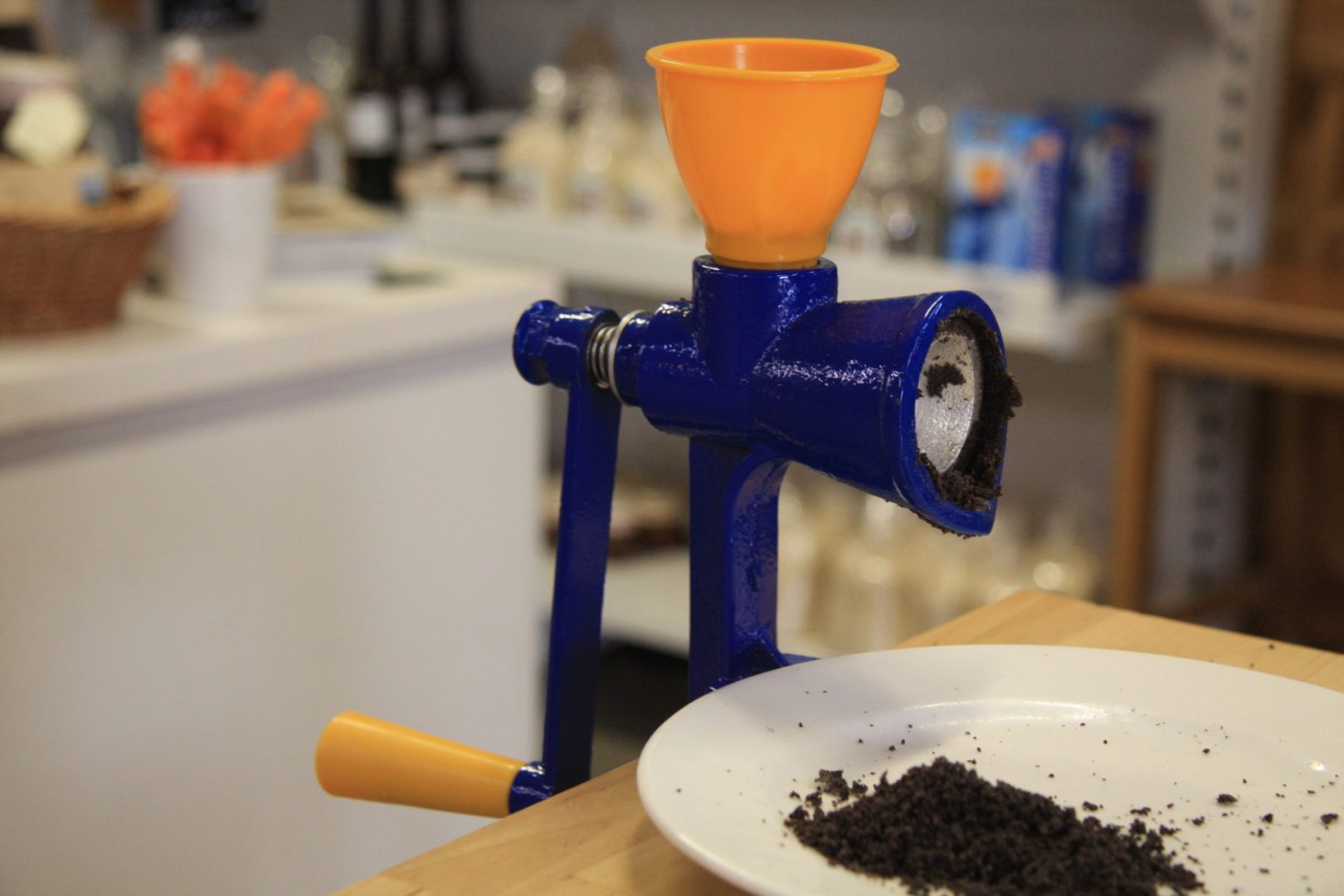
Poppy is today, as Gabriela Čechovičová says, an interesting plant not only for the food and pharmaceutical industry but also for bioenergy producers. Poppy is an excellent biofuel because it has excellent calorific value. Poppy has also been a popular ornamental and decorative plant for centuries. Not only poppy seeds but also the plant itself can be used.
Text and photo: Daniel Košťál
in collaboration with Gabriela Čechovičová, grower and expert in poppy

































